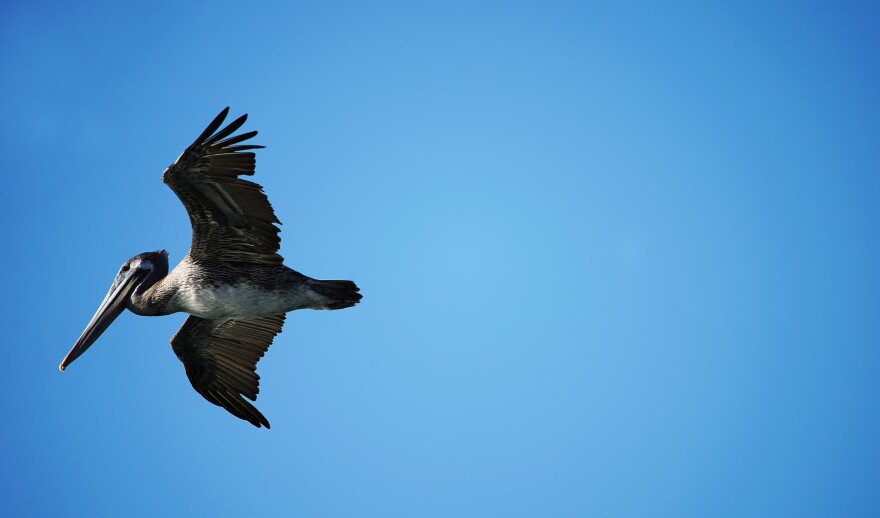With our free press under threat and federal funding for public media gone, your support matters more than ever. Help keep the LAist newsroom strong, become a monthly member or increase your support today.
Brown Pelicans Are Starving To Death In Southern California. How You Can Help

Wildlife experts are stumped over why scores of brown pelicans are starving to death across Southern California when there is plenty of fish for them to eat.
“They’re diving but they’re coming up empty,” said Debbie McGuire, executive director of the Wetlands and Wildlife Care Center in Huntington Beach. “Hopefully we'll figure it out. There's a lot of us working on it.”
As of early Monday afternoon, the center had processed 128 pelicans, but only 55 were still alive.
Many did not survive the trip to the center.
“They're dead on arrival, and the others are dying really fast within the first few hours,” McGuire said.
Sick and far from home

The majority of birds are being found along the Orange County coast at beaches and marinas in Huntington Beach, Newport Beach, and Laguna Beach, McGuire said. Dana Point Harbor alone was where 18 sick birds were caught and transported in cages to the center.
McGuire said a surprising and alarming number of pelicans are being recovered inland in people’s backyards and parking lots in places such as Downey, Vernon, Hemet, and Whittier Narrows.
“They're probably following up the rivers in the watershed looking for food and then they get so far inland and then they run out of gas or food supply and they land there,” McGuire said.
One possible reason for why the pelicans are starving is that for some reason they can’t get to their most important food source: anchovy. McGuire said this may be because pelicans only dive to depths of 6 feet, while other marine birds like loons and cormorants can dive further and are not experiencing the same problems.

Two years ago, brown pelicans faced a similar, unexplained crisis. The difference, McGuire said, is that the pelicans sickened in 2022 were younger while this time there is a mix of ages and illnesses seem much more severe.
Treated with “fish” shakes
At the Huntington Beach center, 10 staffers and 250 volunteers are taking shifts treating the surviving pelicans in tents and under heat lamps.
"If we can get them stable enough to get past the first two hours (after arrival) and get their body temperature up to a normal temperature, they seem to be surviving and doing a lot better," McGuire said.
The birds are taking in IV fluids and consuming protein “fish” shakes before they graduate to eating smelt and herring.
Some of the sick pelicans have also sustained injuries from being caught in fishing gear and are requiring surgery.
Encountering a sick pelican
Healthy brown pelicans are feisty and will snap at people who get too close, so it’s quite evident when they’re sick because of how listless they become.
“People walk right by them and they just they don't even care,” McGuire said. “They just don't have any energy to get away.”
If you come across a sick pelican, call animal control and expect to wait four to six hours before an officer arrives, McGuire said.
It’s not recommended to bring in the pelican yourself.
“It’s a big bird with a big beak and they will snap at you because they’re going to be afraid,” McGuire said.
How you can help
The center is taking donations to handle the spike in pelican patients. With each pelican's care costing about $45 per day, the daily bill for pelicans exceeds $2,500.
This is on top of the costs the center incurs for taking care of more than 700 other animals that include injured and sick geese, house finches, and mallards.
The center welcomes applications for volunteers.
Information on volunteering:
- Location: 21900 Pacific Coast Highway, Huntington Beach
- You must be 16
- You must commit to at least one four-hour shift a week for six months
- Things to know, according to the center: It is not glamorous, it is a commitment, it is emotional, but rewarding
Learn more about what do to if you find sick animal ▶








